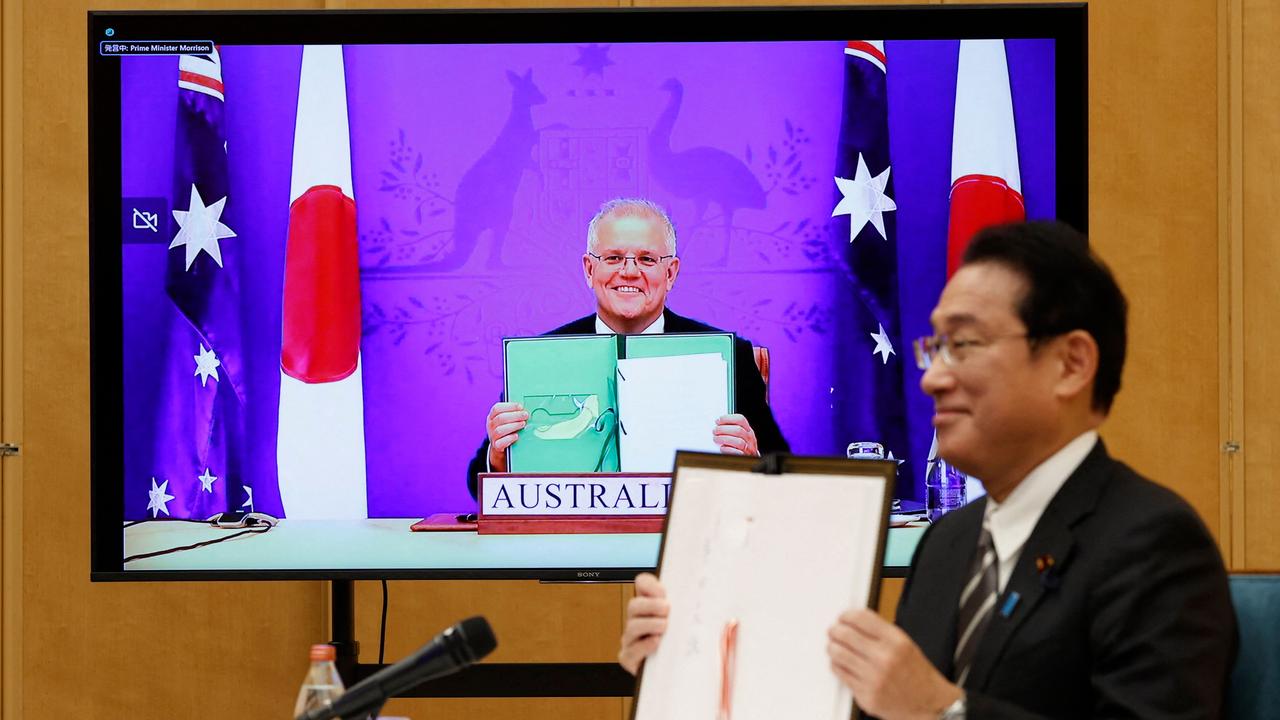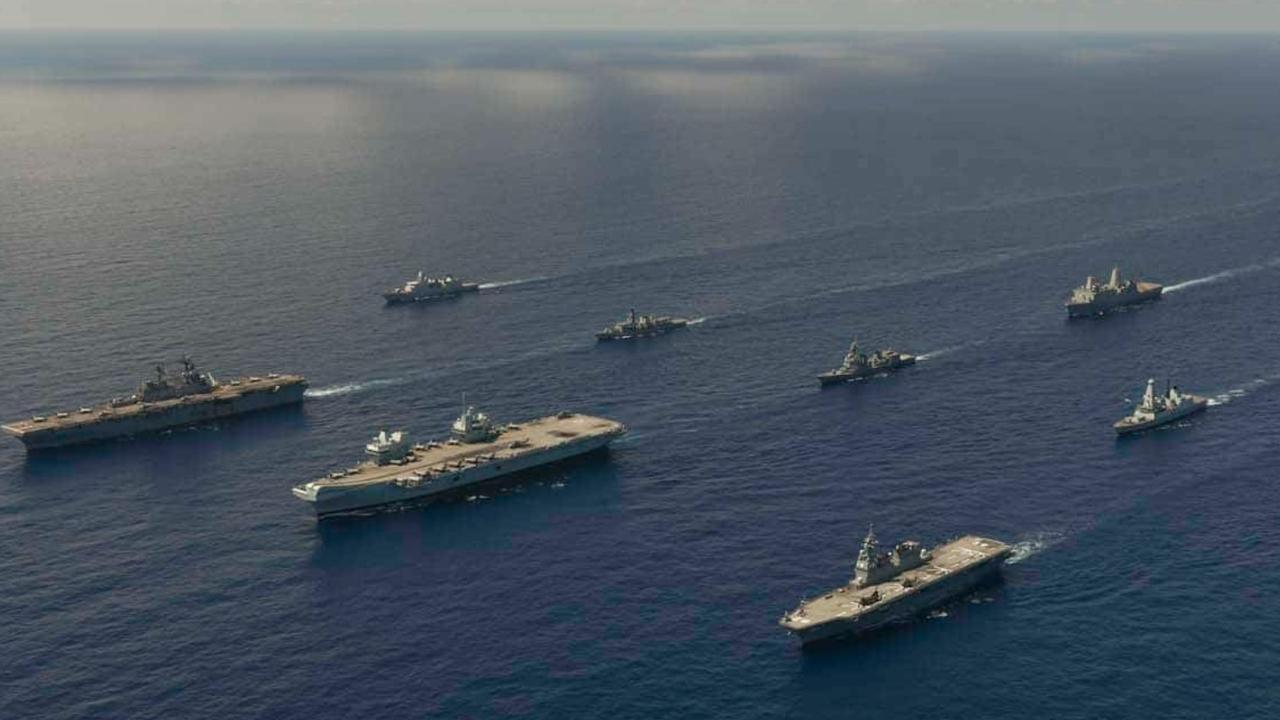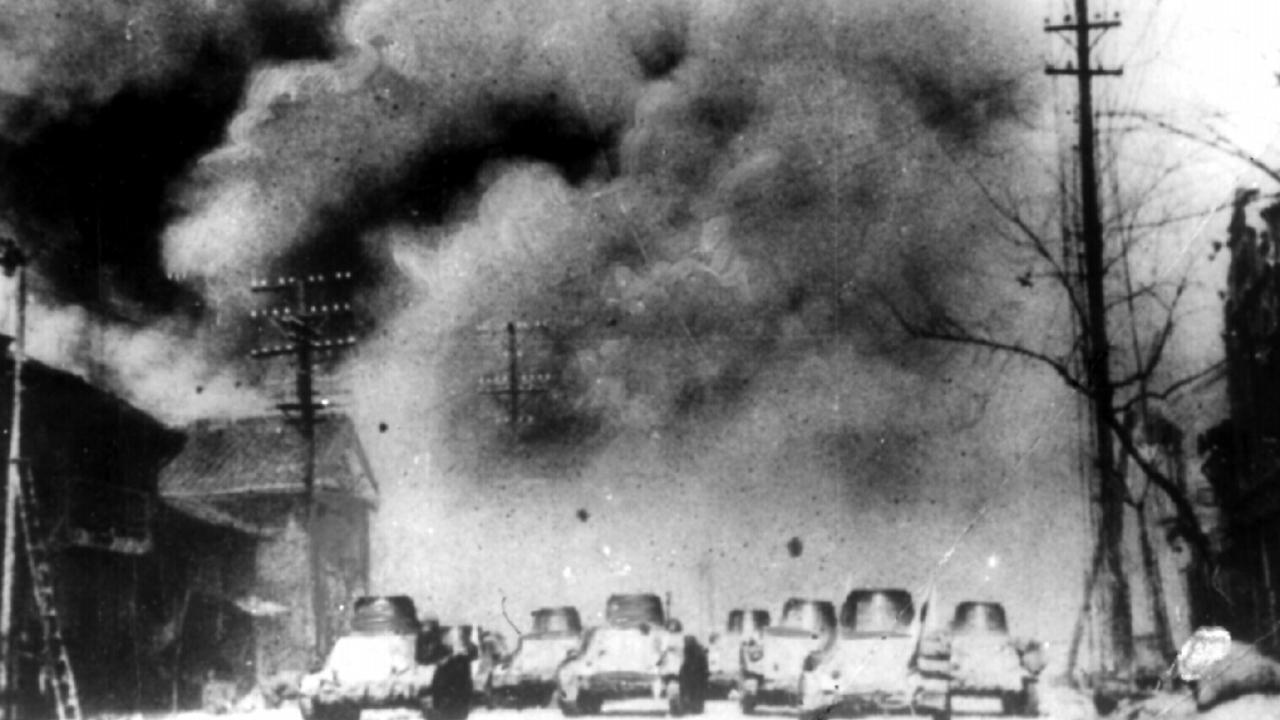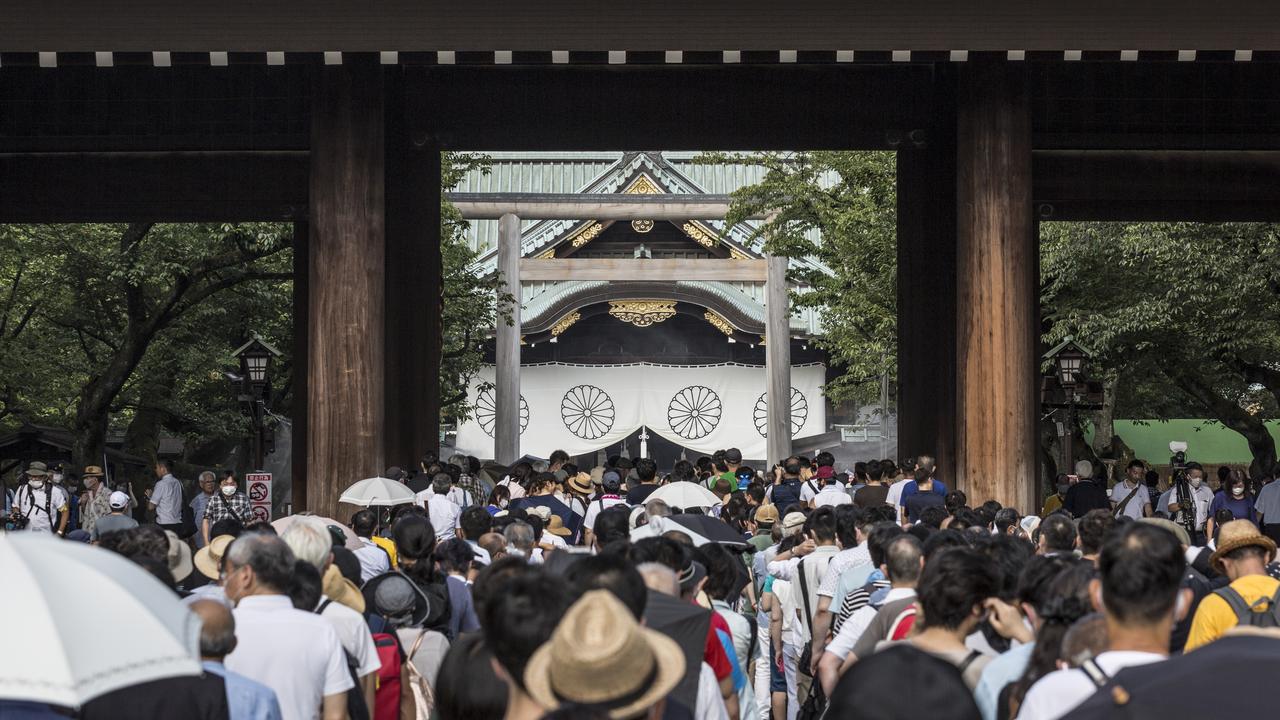China’s warning over Japan and Australia forming ‘NATO alliance’
Prime Minister Scott Morrison did something to strengthen global ties – but China isn’t happy about the new arrangement at all.
Beijing has warned of “firm countermeasures” after Canberra and Tokyo “inflamed regional tensions” by forming a “NATO in the Pacific”.
Japan and Australia this week signed a Reciprocal Access Agreement (RAA) to strengthen defence and security ties. The pact was a “shared trust between two great democracies committed to the rule of law, human rights, free trade and a free and open Indo-Pacific,” Prime Minister Scott Morrison said.
China wasn’t mentioned by name. But each issue highlighted is a point of contention between the two allies and the ambitious superpower.
“There is no doubt that the agreement is targeting China,” the Chinese Communist Party news service Global Times states. “The Pacific Ocean should not become the ocean for some countries to make waves, and any attempt to bring harm to China’s territory will meet with firm countermeasures.”

The editorial echoed sentiments expressed by China’s Foreign Ministry spokesperson Wang Wenbin. “Co-operation between countries should help boost understanding and trust in the region, not target or damage the interests of a third party,” he accused.
But Beijing’s “Wolf Warrior” diplomacy is driving Canberra and Tokyo together.
Australia found itself the target of coercive economic sanctions after calling for an international investigation into the origins of the Covid-19 pandemic. It’s been accused of adopting a “wrong” stance on matters such as human rights and international law. And threats of direct military attacks upon Australian territory have been made by senior Chinese Communist Party spokespeople.
Like Australia, Japan has also become more outspoken against China’s military adventurism in the South and East China Seas and the Himalayas. It’s also challenged Beijing’s intimidation of Taiwan and Hong Kong, and human rights abuses in Xinjiang.
China, for its part, accuses Japan of having joined the United States to “contain” its growing power.
Simmering tensions
Beijing last year repeatedly warned Tokyo not to “complicate” the situation between the two nations.
Japan has gone on to do precisely that.
The East China Sea neighbours have a longstanding dispute over a group of uninhabited islands known as the Senkakus in Japan and the Diaoyus in China. Japan currently administers the islands. But China has stamped its claim by maintaining a coast guard and fishing militia presence there over the past year.
Beijing insists Japan must “respect China’s sovereignty”.
Tokyo insists Beijing must “respect international law”.
That clash of principles has now extended to Taiwan and the South China Sea.
A new Japanese Defence White Paper declared its security “inextricably tied” to that of Taiwan. Weeks after its release,

It was intended to be an act of deterrence,
“Beijing has to make an estimate of US and Japanese will to defend Taiwan against overt aggression before it could switch its current tactics from psychological coercion, violations of Taiwanese airspace … to an outright invasion,” says Hudson Institute Asia-Pacific Security Chair Patrick Cronin.
Tokyo is a significant regional power.
Japan rivals China as a significant source of infrastructure investment in Southeast Asia. And it has begun to spread its economic influence through the Pacific islands in direct competition.
And despite its officially pacifist constitution, written shortly after its World War II defeat, Japan now has military power rivalling that of the United Kingdom and France.
Memories of war
In December, Foreign Ministry spokesperson Zhao Lijian urged Japan to “reflect deeply upon the Japanese militarism’s fascist atrocities and crimes against humanity in its past, and win the trust of the people around the world through concrete actions.”
Imperial Japan invaded the Republic of China in 1937. Then, in 1941, after its surprise attack upon the United States naval base at Pearl Harbor, it seized much of Southeast Asia and the Western Pacific. The protracted and brutal war of occupation ended only after Japan’s defeat in 1945.

It’s an act of aggression that still rankles the region 77 years on.
“The war of aggression launched by Japanese militarism inflicted untold suffering on the people of the victimised countries in Asia, and left them with indelible painful memories,” Zhao said.
“Several decades on, some in Japan are still denying and even beautifying the history of aggression and colonial rule.”
He was referring to the ongoing practice of senior politicians to revere the dead at the Yasukuni Shrine, which idolises Japan’s convicted war criminals.

Japan was disarmed after WW II. But it established a lightly armed self-defence force in 1950 in response to the Korean War.
Since then, neighbouring North Korea’s belligerence has been a significant justification for Japan’s steadily increasing defence expenditure. As has the ongoing Senkaku dispute and a similar argument with Russia over islands to its north.
After the US, China, Russia, and India, Japan is now the world’s fifth-largest military power.
‘Danger and instability’
“By signing the RAA, the strategic and military co-operation between Japan and Australia is becoming more aggressive,” director of the Australian Studies Center at East China Normal University professor Chen Hong reportedly said. “(This) will increase regional tensions and possibilities of military confrontations, bringing danger and instability to the region.”
Japan’s modern military can operate as a powerful integrated component of any force with Australia and the United States. “Reinterpretation” of its pacifist constitution is seeing it increasingly do so.
Its navy has more than 48 large surface warships, eight of which are advanced Aegis anti-aircraft / antimissile vessels. Its 20 diesel-electric submarines are among the world’s most advanced. And its air force of more than 900 aircraft includes modern F-35 stealth fighters.
CV-16 Liaoning engaging in flight ops while JMSDF keeps a very close eye via JS Izumo. The Chinese carrier has since returned to port, after a three week cruise conducting various exercises. https://t.co/POjLGcZ6Hp
— Alex Luck (@AlexLuck9) December 30, 2021
Japan was a pioneer of aircraft carrier technology and operations in the 1920s and 30s. But almost its entire fleet was destroyed in World War II.
It’s now on the brink of operating aircraft carriers again for the first time since 1945.
Last year the helicopter-carrier Izumo operated US F-35B “jump jet” stealth fighters for the first time. It is one of four similar ships currently undergoing conversion to operate the jets permanently.
The Izumo intercepted China’s first operational aircraft carrier, Liaoning, as it operated in international waters off Japan’s coast in late December.
The satellite via @planet captured the Chinese and Japanese aircraft carriers in the same frame. In the Miyako Strait, the same day the two aircraft carriers met#OSINTpic.twitter.com/ZSJmC3Hdj8
— GEOINT (@lobsterlarryliu) December 18, 2021
When added to other regional powers, Tokyo’s military strength would be a major force to reckon with.
Which is why Beijing has expressed its displeasure with the RAA pact.
Australia is only the second country with which Japan has established such an agreement. The first was the United States.
Chinese Communist Party military analyst and TV commentator Song Zhongping said it “targeted” China.
“Under the agreement, Japan and Australia could build a joint maritime communication mechanism,” he said. “As both have a large number of antisubmarine patrol aircraft, they could conduct activities from the Malacca Strait to the Miyako Strait in the Indo-Pacific.”
Jamie Seidel is a freelance writer | @JamieSeidel






